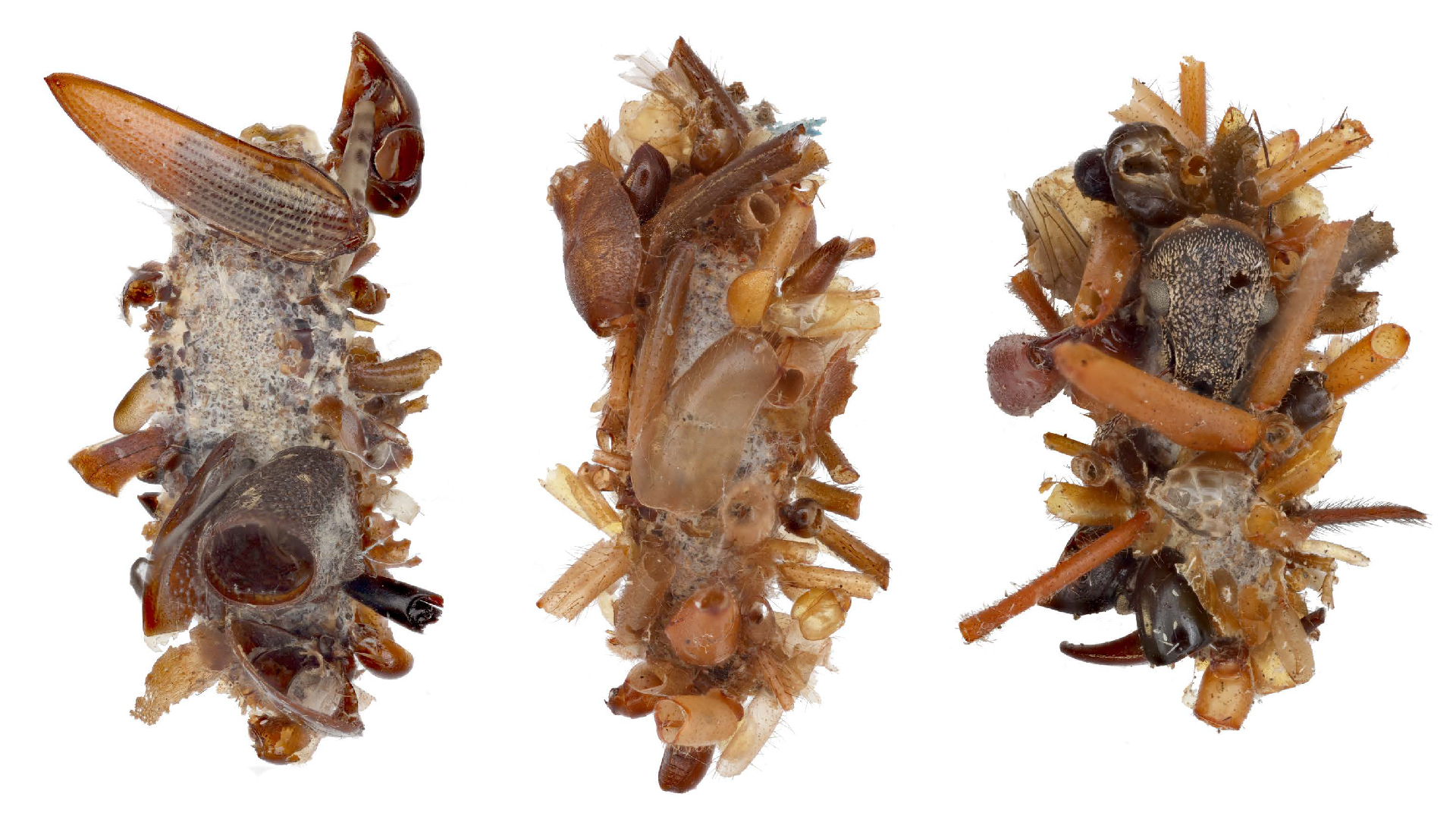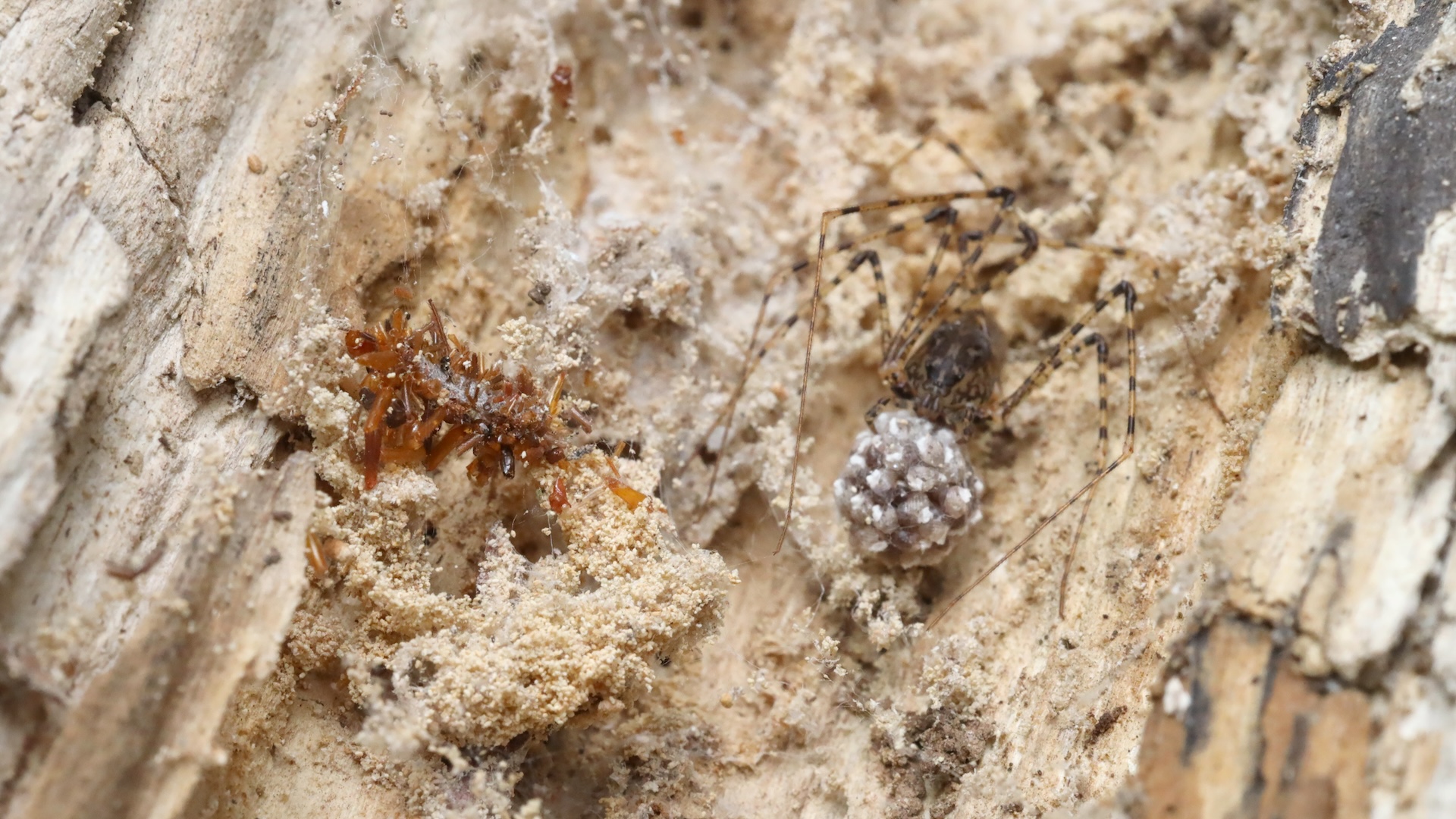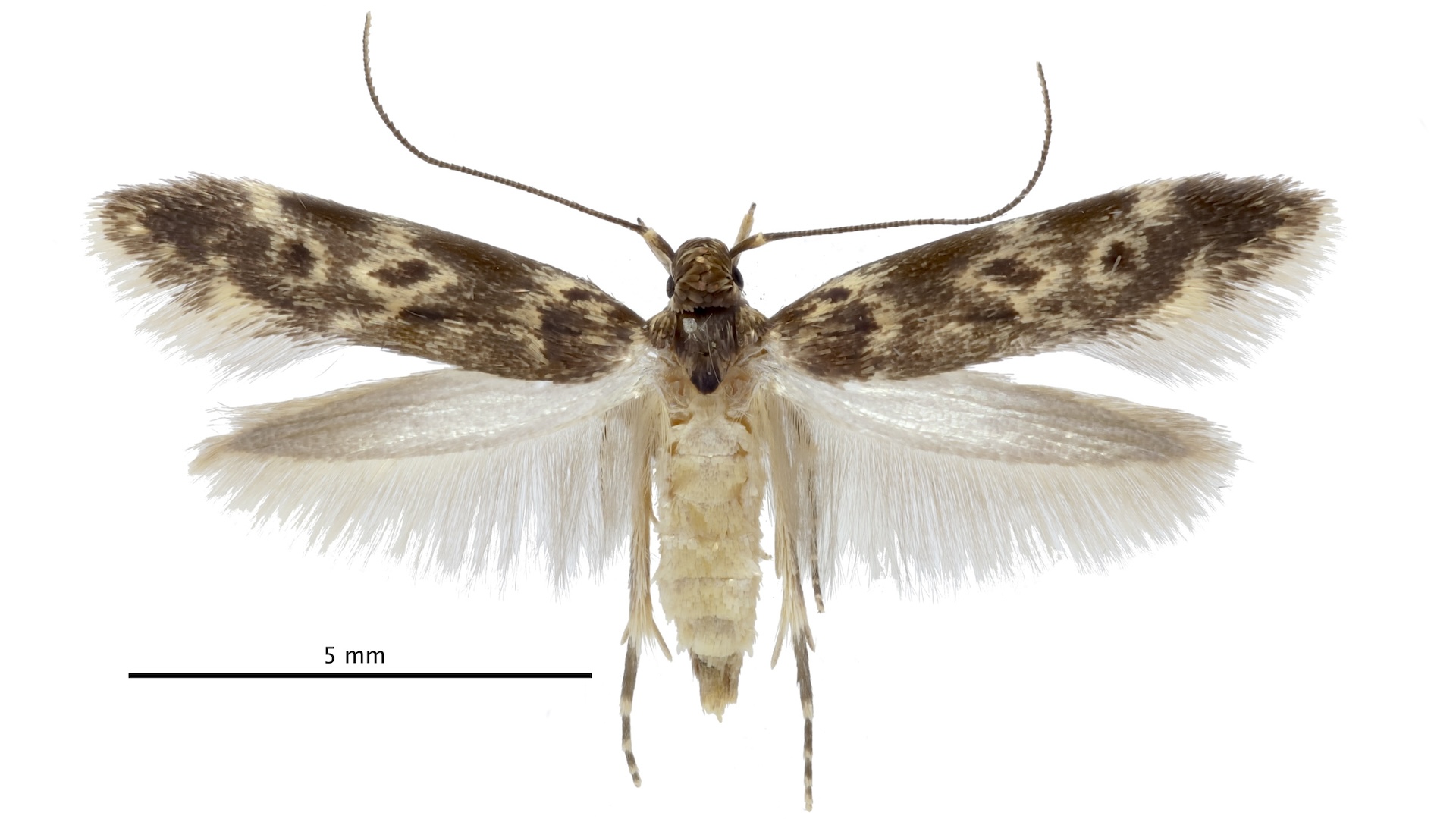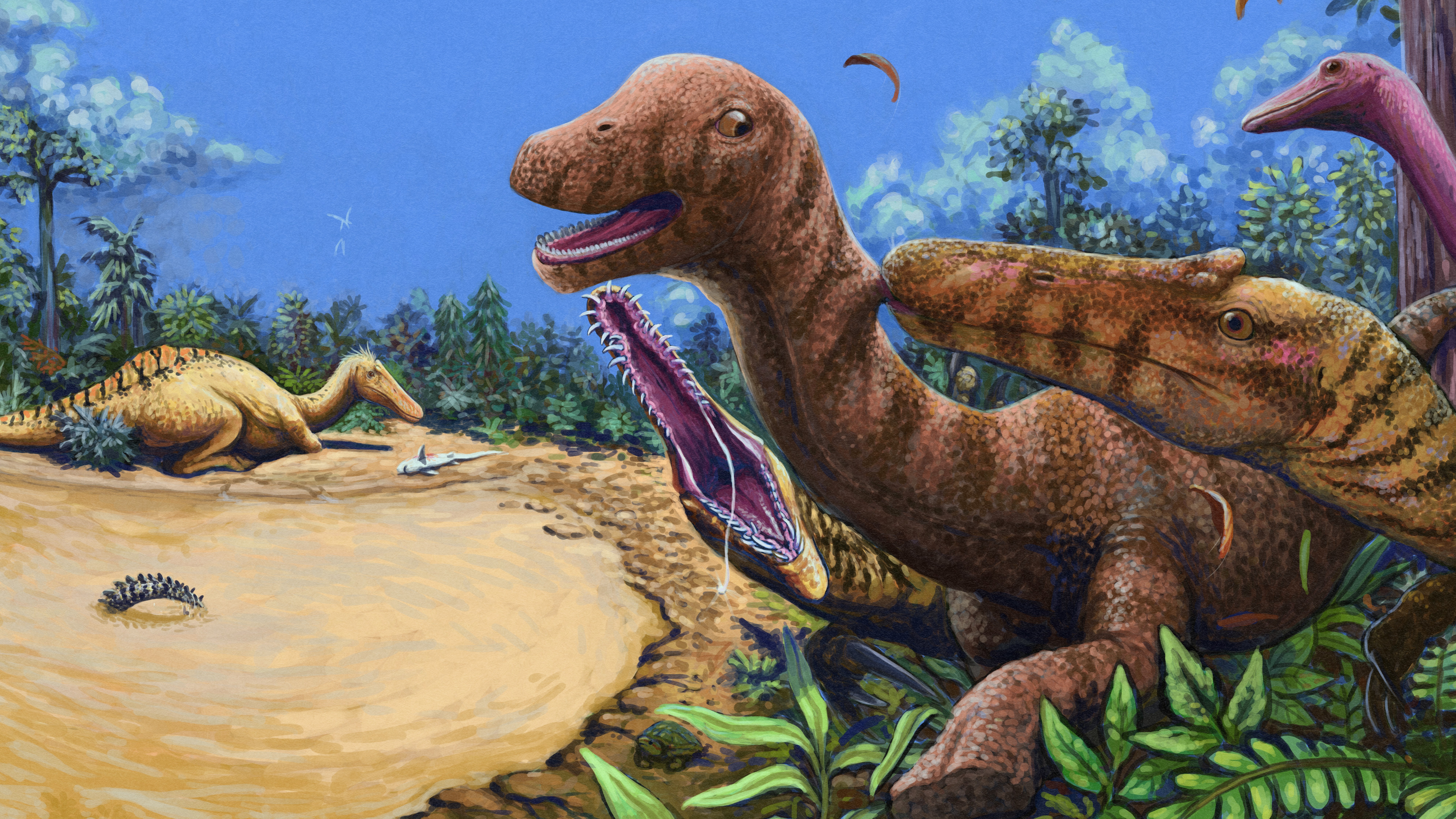Bone collector caterpillar: The very hungry caterpillar of your nightmares
Bone collectors feast on dead and dying critters caught in a spider's web and then decorate themselves with the legs, wings and heads of their victims to avoid detection by their spider hosts.

Name: Bone collector caterpillar
Where it lives: In cobwebs on a single mountain range on Oahu, Hawaii
What it eats: Flies, weevils, bark beetles, ants or any arthropod caught in a spider's web
The bone collector is not just a very hungry caterpillar — it has an appetite for flesh. And once it finishes scavenging on dead or dying insects trapped in a spider's web, the bone collector covers itself in the legs, wings or heads of its prey for camouflage to avoid being eaten.
The newly discovered caterpillar inhabits a roughly 6-square-mile (15 square kilometers) area in the Wai'anae mountain range on Oahu and lives exclusively in and around cobwebs in logs, tree hollows or rock cavities. The bone collector uses the dark setting to its advantage: If the spider host detects movement on its web, it will rush over to attack the intruder. But under the cover of darkness, the silk casing layered in inedible body parts smells, or tastes, like last week's lunch. The tactic works well, as the caterpillars have never been found to be eaten by spiders or wrapped in their silk, according to a study in the journal Science.
The bone collector is part of the genus Hyposmocoma, small moths that live in Hawaii and are known for weaving mobile silk containers. Whereas other varieties might decorate their shelters with bits of algae or lichen to look like tree bark, for example, no other known Hyposmocoma species recognizes random insect body parts and attaches them to its case.
The species evolved at least 6 million years ago, according to the researchers, making it older than the island of Oahu. This suggests bone collector moths migrated from an even older Hawaiian island that has since disappeared to get to their current forest.

A bone collector caterpillar next to a non-native spider and its egg sac.

An adult female bone collector moth.
Carnivorous caterpillars are extremely unusual. They make up about 0.13% of the world's moth and butterfly species, but the bone collector, in particular, is especially rare — after more than two decades of fieldwork, researchers have found only 62 specimens.
In terms of survival, the bone collectors aren't helping their cause. They are territorial, and typically only one caterpillar is found on a single cobweb because they cannibalize the competition.
Fortunately for us, the bone collector caterpillar is only about a quarter of an inch (5 millimeters) long.
Get the world’s most fascinating discoveries delivered straight to your inbox.
" I have no doubt that if we were their size, they would eat us," Daniel Rubinoff, lead author of the study and an entomologist at the University of Hawaii at Manoa, told Live Science. "There's no way that they would just eat insects. That just happens to be their fighting class, so to speak."

Jesse Steinmetz is a freelance reporter and public radio producer based in Massachusetts. His stories have covered everything from seaweed farmers to a minimalist smartphone company to the big business of online scammers and much more. His work has appeared in Inc. Magazine, Duolingo, CommonWealth Beacon, and the NPR affiliates GBH, WFAE and Connecticut Public, among other outlets. He holds a bachelors of arts degree in English at Hampshire College and another in music at Eastern Connecticut State University. When he isn't reporting, you can probably find him biking around Boston.
You must confirm your public display name before commenting
Please logout and then login again, you will then be prompted to enter your display name.


